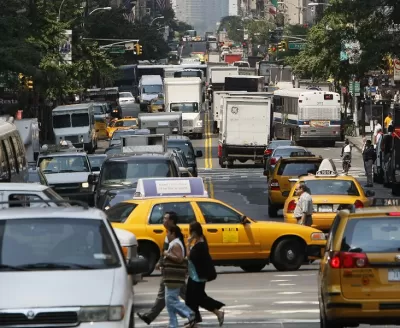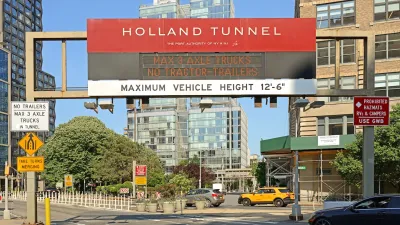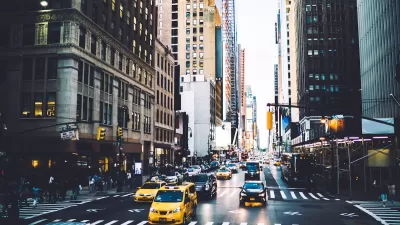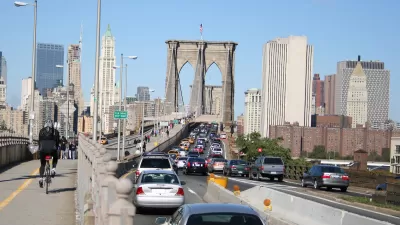The Metropolitan Transportation Authority has resubmitted its environmental impact assessment to federal officials, who sent the agency over 400 additional questions earlier this year.

According to an article by Stephen Nessen in Gothamist, New York’s Metropolitan Transportation Authority (MTA) has completed its response to over 400 questions sent to the agency by the Federal Highway Administration (FHA) regarding the environmental impact of the city’s proposed congestion pricing scheme, a key step in moving forward with implementation of the program. The program would enact cordon pricing (a fee charged for entering a specific area) south of 60th Street in Manhattan.
“Once the Federal Highway Administration (FHWA) approves the MTA’s environmental assessment the MTA still has a long way to go. It must conduct more public outreach, install devices to collect the tolls, and set a price that will ultimately raise $1 billion a year in revenue.” As Nessen points out, the program was initially scheduled to begin collecting revenue in 2021, but the MTA now expects. However, “Because congestion pricing was first delayed by the Trump administration, and then by the pandemic, and finally by the recent round of federal questions, the 2020-2024 capital plan will be in its last year by the time congestion pricing is actually generating revenue.”
A June 2022 poll found that 42 percent of New Yorkers intend to drive less, and 64 percent would make the switch to public transit, if congestion pricing took effect. The program would exempt New Yorkers who live in the congestion zone and earn less than $60,000 per year.
FULL STORY: MTA’s congestion pricing program back on track, again

Planetizen Federal Action Tracker
A weekly monitor of how Trump’s orders and actions are impacting planners and planning in America.

Trump Administration Could Effectively End Housing Voucher Program
Federal officials are eyeing major cuts to the Section 8 program that helps millions of low-income households pay rent.

The 120 Year Old Tiny Home Villages That Sheltered San Francisco’s Earthquake Refugees
More than a century ago, San Francisco mobilized to house thousands of residents displaced by the 1906 earthquake. Could their strategy offer a model for the present?

Philadelphia Councilmember Proposes Transit Access Fund
The plan would allocate 0.5 percent of the general fund toward mobility subsidies for low-income households.

Texas Bill Would Ban Road Diets, Congestion Pricing
A Texas state senator wants to prevent any discussion of congestion pricing and could suspend existing bike lane and sidewalk projects.

USDOT Threatens to Pull New York Highway Funding
The Trump administration wants the state to kill New York City’s congestion pricing program despite its demonstrated success.
Urban Design for Planners 1: Software Tools
This six-course series explores essential urban design concepts using open source software and equips planners with the tools they need to participate fully in the urban design process.
Planning for Universal Design
Learn the tools for implementing Universal Design in planning regulations.
Ada County Highway District
Clanton & Associates, Inc.
Jessamine County Fiscal Court
Institute for Housing and Urban Development Studies (IHS)
City of Grandview
Harvard GSD Executive Education
Toledo-Lucas County Plan Commissions
Salt Lake City
NYU Wagner Graduate School of Public Service





























